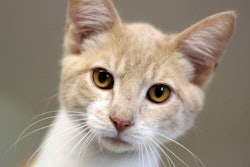
For thousands of years, most dogs worldwide ate human food or at least what was left of it, in the form of carcasses, scraps and other remains, but human foods can be toxic to other animals, too high in calories or otherwise unhealthy. Not to mention that humans ate just about anything they could hunt, gather or harvest for most of our own history, so the term human-grade didn’t place many boundaries. Meanwhile, most cats also ate whatever they could catch, notwithstanding humans’ offerings to divine felines in Egypt. While helpful for reducing rodent in the pantry, all those hungry cats put heavy pressure on native wildlife, especially in places like Pacific islands or the Americas where cats are an invasive predator.
The pet food industry grew as people came to understand that dogs, cats and other animals have nutritional needs different from our own. Nutritionally balanced kibbles became standard for dogs and cats as levels of wealth and nutritional knowledge grew. Many of these pet foods used ingredients derived from human food production, but not eaten by people.
During the past few decades, pet food companies have returned to the idea of feeding pets like people. Instead of food scraps though, these companies tout human-grade ingredients in formulations designed to resemble human entrees and snacks. Humanization of pets and the resultant premiumization of pet food became the driving forces behind much new product development and marketing in the pet food industry.
Pet food and human food converging
What’s the next step? Could human and pet foods converge into One Food?
The Centers for Disease Control, United Nations Food and Agriculture Program and other agencies collaborate in the One Health program. This initiative connects human health to that of other animals, by examining shared threats such as zoonotic diseases. The ongoing pandemic reminds us of the importance of this One Health concept, since COVID-19 likely passed from another animal to humans.
While diseases are one aspect of health, so is nutrition. The human and pet food streams are already converged, with many ingredients appearing in both. So much so that you could write a book about it. Earlier this year, Nestle Purina released a cookbook for people, inspired by the ingredients used in a new line of cat recipes, Fancy Feast Petite Feasts.
“In my role as a chef, I’ve always seen the influence that human cuisine has had on pet food,” Purina’s in-house chef, Amanda Hassner, told Petfood Industry. “We want our pets to have the same enjoyment and nourishment in their food that we have in ours. My role at Fancy Feast is to help bridge the gap between human and pet food. I create and present human recipes to my colleagues who then go back and create new products inspired those recipes...”
“I want to make sure our pets are getting the full food experience that we humans get and to help humans experience what cats do with food,” she said. “I developed the Petite Feast cookbook to celebrate the launch of the new Fancy Feast Petites Line, which includes proteins that both cats and humans enjoy. While the Petite Feast Cookbook is for humans, the recipes inside pay homage to the elevated flavor profiles of Petites providing cat owners with the opportunity to understand what the Petites experience is like for their cat.”
While eating one’s own dog food remains a negative thing, eating one’s own cat food ingredients may be a good thing for the pet food industry, as it emphasizes the humanization of pet foods. As this concept spreads though, it could fuel the already burgeoning number of recipes available for foods that both humans and pets can enjoy together, such as low sugar cookies or peanut butter and banana treats.
The pandemic may have boosted the pet humanization trend. The economic and logistic problems caused by the pandemic continue, but overall the pet food industry proved resilient and even benefitted. Movement restrictions meant high-earning professionals worked from home with pets ripe for pampering. Some brought pets into the home for the first time to keep kids occupied, while others adopted a fur baby in lieu of a biological baby. For these reasons and more, pet populations among those most likely to spend more on premium pet foods grew during the pandemic, especially in the U.S. and other wealthy markets.
At the same time, more people have learned to cook for themselves as restaurants closed during lockdowns. While the humanization of pet food has been a driver for the industry, the recognition that people and pets can use the same ingredients in their recipes could encourage more people to make their own dog food and eat it too.
However, restaurants aren’t going to disappear for the same reasons commercial kibble won’t. Both are easy. Similarly, cost may remain a barrier for many pet owners. Also, pet foods have an advantage like that of baby food producers. People fear feeding something to their fur baby that could hurt them. For these reasons and more, DIY likely won’t doom the pet food industry. On the contrary, a One Food concept could fuel further humanization.
This is the first in a series of blogs that will examine the convergence of the pet and human food industries.

















